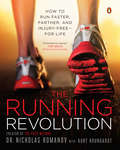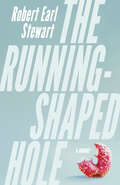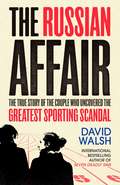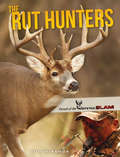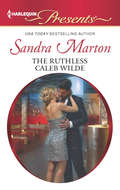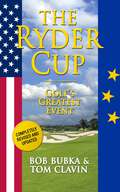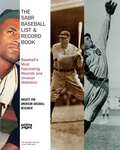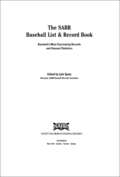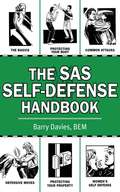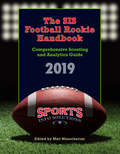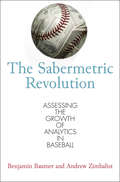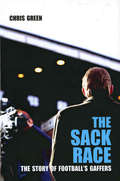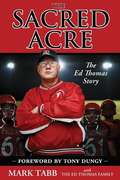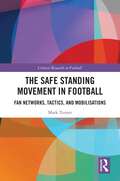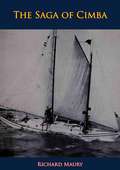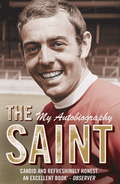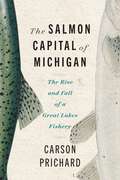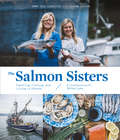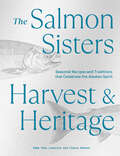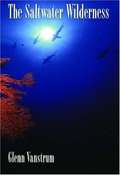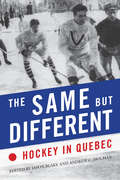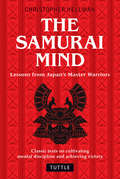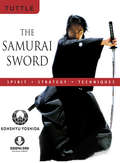- Table View
- List View
The Running Revolution
by Kurt Brungardt Nicholas RomanovFrom a two-time Olympic coach who has trained the running elite, an essential guide for all runners seeking to go faster and farther without injuryChristopher McDougall's Born to Run--and the wildly popular natural running trend it sparked--changed the way we think about running, but it has also prompted many questions: Have we been running the wrong way? And, have we been running in the wrong kind of shoe? What is the safest type of foot strike? How many types are there? And what is a foot strike anyway? No existing guide has clearly addressed these concerns--until now. The Running Revolution provides both beginning and experienced runners with everything they need to know in order to safely and efficiently transition to and master a safer and more biomechanically efficient way of running that is guaranteed to improve performance and minimize wear and tear on the body. More than a one-size-fits-all guide, The Running Revolution will provide readers with clear instructions that they can easily integrate into their unique running histories in order to run safely, intelligently, and efficiently for many years to come.
The Running-Shaped Hole
by Robert Earl StewartA searching, self-deprecating memoir of a man on his way to eating himself to death before discovering the anxiety and fulfillment of distance running.“Uplifting, emotional, and just plain hilarious, The Running-Shaped Hole may even inspire you to put down your fork and pick up those running shoes.” — JAY ONRAIT, TSN host and broadcasterWhen Robert Earl Stewart sees his pants lying across the end of his bed, they remind him of a flag draped over a coffin — his coffin. At thirty-eight years old he weighs 368 pounds and is slowly eating himself to death. The only thing that helps him deal with the fear and shame is eating. But one day, following a terrifying doctor’s appointment, he goes for a walk — an act that sets The Running-Shaped Hole in motion. Within a year, he is running long distances, fulfilling his mother's dying wishes, reversing the disastrous course of his eating, losing 140 pounds, and, after several mishaps and jail time, eventually running the Detroit Free Press Half-Marathon.At turns philosophical and slapstick, this memoir examines the life-altering effects running has on a man who, left to his own devices, struggles to be a husband, a father, a son, and a writer.
The Russian Affair: The True Story of the Couple who Uncovered the Greatest Sporting Scandal
by David WalshLONGLISTED FOR THE WILLIAM HILL SPORTS BOOK OF THE YEAR PRIZE 2020 'Reads like a thriller, or even a spy novel...Walsh keeps you gripped' Rosamund Urwin, Sunday Times'A turbulent but ultimately inspiring tale. The candour...is rare and gripping' Matt Dickinson, The TimesIt was the story that shocked the world: Russian athletics was revealed to be corrupt from top to bottom, with institutionalised doping used to help the nation's athletes win medals they did not deserve. But the full story of the couple who blew the whistle has never been told - until now. When Russian anti-doping official Vitaly Stepanov met the young 800m athlete Yuliya Rusanova, for him it was love at first sight. Within two months, they were married. But there was a problem – in fact, there were lots of problems. She admitted she was doping and that everyone else was doping, and she let him know that she came from a dark place … It could all have brought a very swift end to a very hasty marriage, but gradually the Stepanovs began to realise that whatever you did, the system in Russia was stacked against you. In the end, the only ones they could rely upon were each other. Fully aware of the risks they were taking, they decided to turn the tables on those who had manipulated them and cheated the sporting world. The result of their investigative work sent shockwaves around the planet and led to Russia&’s athletes being banned from world sport, while the Stepanovs themselves had to go into hiding. The Russian Affair is a gripping true-life drama that at times reads like a spy novel and at others like an epic love story. But, at the centre of it all, is a quietly determined couple who knew that if they stood together they could shine a light on a corrupt system and bring it crashing to the ground.
The Rut Hunters: Pursuit of the Whitetail Slam
by Tom MirandaTop tactics for whitetails from Tom Miranda...and many more of America's top hunters! Over thousands of years, whitetails have spread out across North America and adapted to new habitats, evolving into nearly 20 subspecies today. In the pages of The Rut Hutners, join veteran bowhunter Tom Miranda as he looks into the challenges of hunting whitetails in the eight recognized territories of the North American Whitetail SLAM. With over 30 years of bowhunting experience, Miranda has assembled a team of top whitetail hunters to discuss the differences in habitat and habits, tactics and strategies for hunting white-tailed deer in the four corners of our continent. Because of a whitetail buck's elusive nature, completing a Whitetail SLAM can be a difficult task. Yet with the knowledge acquired from this book, hunters can set out to achieve their goals when hunting mature, dominant bucks.
The Ruthless Caleb Wilde: A Secret Baby Romance (The Wilde Brothers #2)
by Sandra MartonCaleb Wilde, infamous attorney, has a merciless streak and a razor-sharp mind...Years of relentless work have hardened Caleb's heart-until one New York night changes everything. Now, he's haunted by the memory of tangled sheets, unrivaled passion and one woman-Sage Dalton.The siren of his dreams is, in reality, the woman who played him for a fool-but still nothing can satiate his burning desire for her. So when he learns that Sage has something very precious that belongs to him, a gift from their one night, Caleb will stop at nothing to claim it!
The Ryder Cup: Golf's Greatest Event
by Tom Clavin Bob BubkaRevised and updated, this in-depth look recounts The Ryder Cup's rich history and venerated place in sports, its champions and its characters, and its status as golf's greatest grudge match. From its humble origins in 1927 to its place today as golf's most gentlemanly battle—and a multi-million-dollar international sports event—The Ryder Cup has cemented its place in both its legacy and lore. Golf journalist Tom Clavin and golf commentator Bob Bubka have now made current their seminal work on the tournament, exploring the history and the rivalries, the extraordinary triumphs and devastating defeats, and the U.S. and the European contingents who have made this contest so remarkable. The names are legendary for any fan of golf: Palmer, Nicklaus, Jacklin, Floyd, Mickelson, Ballesteros, Faldo, Hogan, Nelson, Watson, Strange, Sarazen, Crenshaw, Woods, Montgomerie…the list goes on, as do their pitched battles for dominance and accomplishments on the greens. This up-close and personal look at The Ryder Cup is a must-read for golf fans, especially in preparation for the landmark 40th Anniversary tournament in Gleneagles, Scotland, in 2014.
The SABR Baseball List & Record Book
by Lisa HochsteinFrom the authority on baseball research and statistics comes a vast and fascinating compendium of unique baseball lists and records. The SABR Baseball List & Record Book is an expansive collection of pitching, hitting, fielding, home run, team, and rookie records not available online or in any other book. This is a treasure trove of baseball history for statistically minded baseball fans that's also packed with intriguing marginalia. For instance, on July 25, 1967, Chicago's Ken Berry ended Game Two of a doubleheader against Cleveland with a home run in the bottom of the sixteenth inning -- Chicago's second game-winning homer of the day. The comprehensive lists include Most Career Home Runs by Two Brothers (Tommie and Hank Aaron have 768), Most Seasons with 15 or More Wins (Cy Young and Greg Maddux each have 18), and Highest On Base Percentage in a Season by a Rookie (listing every rookie above . 400). Unlike other record books that only list the record holders -- say, most RBI by a rookie, held by Ted Williams with 145 -- SABR details every rookie to reach 100 RBI. Other record books might note the last pitcher in each league to steal home; here SABR has included every pitcher to do it. The book also includes a number of idiosyncratic features, such as a rundown of every player who has hit a triple and then stolen home, or every reliever who has won two games in one day. Many of the lists include a comments column for key historical notes and entertaining trivia (Bob Horner hit four home runs in a 1986 game, but his team lost). This is a must-have for every fan's library. Edited by Lyle Spatz, Chairman of the Baseball Records Committee for SABR.
The SABR Baseball List & Record Book
by Society for American Baseball ResearchFrom the authority on baseball research and statistics comes a vast and fascinating compendium of unique baseball lists and records. The SABR Baseball List & Record Book is an expansive collection of pitching, hitting, fielding, home run, team, and rookie records not available online or in any other book. This is a treasure trove of baseball history for statistically minded baseball fans that's also packed with intriguing marginalia. For instance, on July 25, 1967, Chicago's Ken Berry ended Game Two of a doubleheader against Cleveland with a home run in the bottom of the sixteenth inning -- Chicago's second game-winning homer of the day. The comprehensive lists include Most Career Home Runs by Two Brothers (Tommie and Hank Aaron have 768), Most Seasons with 15 or More Wins (Cy Young and Greg Maddux each have 18), and Highest On Base Percentage in a Season by a Rookie (listing every rookie above .400). Unlike other record books that only list the record holders -- say, most RBI by a rookie, held by Ted Williams with 145 -- SABR details every rookie to reach 100 RBI. Other record books might note the last pitcher in each league to steal home; here SABR has included every pitcher to do it. The book also includes a number of idiosyncratic features, such as a rundown of every player who has hit a triple and then stolen home, or every reliever who has won two games in one day. Many of the lists include a comments column for key historical notes and entertaining trivia (Bob Horner hit four home runs in a 1986 game, but his team lost). This is a must-have for every fan's library. Edited by Lyle Spatz, Chairman of the Baseball Records Committee for SABR
The SAS Self-Defense Handbook
by Barry DaviesBarry Davies is one of the most widely respected experts on the techniques and training of the elite British Special Air Service (SAS). In The SAS Self-Defense Handbook, Davies reveals the self-defense techniques of the SAS. The handbook is fully illustrated with nearly 130 photographs and illustrations that explain how to properly use your body and use everyday objects such as desktop items and cigarette lighters to protect yourself. Learn how to avoid physical attacks from humans and animals, and handle those confrontations that cannot be avoided.
The SIS Football Rookie Handbook 2019: Comprehensive Scouting and Analysis Guide
by Sports Info SolutionsOne of the biggest factors in football is the large number of rookies who come into the NFL each year from literally hundreds of colleges and universities, where they play a relatively few games over a limited number of years before being drafted for the pros. Yet many of these young players end up in starting and even starring roles in their first year. Where are avid fans to look for real information on the rookies who may play for their team—or those of their hated rivals—in the upcoming season? The answer to that question is in your hands. Here you will find the very best updated info on over 250 players who may be drafted or signed as free agent rookies in 2019.
The Sabermetric Revolution
by Andrew Zimbalist Benjamin BaumerFrom the front office to the family room, sabermetrics has dramatically changed the way baseball players are assessed and valued by fans and managers alike. Rocketed to popularity by the 2003 bestseller Moneyball and the film of the same name, the use of sabermetrics to analyze player performance has appeared to be a David to the Goliath of systemically advantaged richer teams who could only be toppled by creative statistical analysis. The story has been so compelling that, over the past decade, team after team has integrated statistical analysis into their front offices. But how accurately can crunching numbers quantify a player's ability? Do sabermetrics truly level the playing field for financially disadvantaged teams? How much of the baseball analytic trend is fad and how much fact?The Sabermetric Revolution sets the record straight on the role of analytics in baseball. Former Mets sabermetrician Benjamin Baumer and leading sports economist Andrew Zimbalist correct common misinterpretations and develop new methods to assess the effectiveness of sabermetrics on team performance. Tracing the growth of front office dependence on sabermetrics and the breadth of its use today, they explore how Major League Baseball and the field of sports analytics have changed in the decade since the 2002 season. Their conclusion is optimistic, but the authors also caution sabermetric insights will be more difficult to come by in the future. The Sabermetric Revolution offers more than a fascinating case study of the use of statistics by general managers and front office executives: for fans and fantasy leagues, this book will provide an accessible primer on the real math behind moneyball as well as new insight into the changing business of baseball.
The Sack Race: The Story of Football's Gaffers
by Chris GreenThe future of football management is a hot topic of debate. An unprecedented spate of sackings in the 2001-02 season and the manner of many of the dismissals filled the back pages. There has even been talk of managers going on strike to defend their ill-treated colleagues. Packed with big names and exclusive stories, The Sack Race challenges the sanitised picture of football management portrayed in glossy autobiographies. It lays bare a profession where pressure to obtain results is immense and the tolerance of failure is low. Despite football's supposed professionalism, we learn that 'The Gaffer' is often an ill-prepared ex-player who has hopped onto the managerial merry-go-round more as a perceived 'character' than a qualified coach. This remarkable book traces the development of the football manager's role, offers a critique of the way the game trains its coaches for management and raises valid concerns about the suitability of their employers - the directors whose impatience creates a climate of fear and insecurity. Finally, it asks the controversial question - does 'The Gaffer' have a future?
The Sacred Acre: The Ed Thomas Story
by Mark TabbOn a Sunday in May 2008, an F-5 tornado struck the town of Parkersburg, Iowa, killing eight people and destroying 250 homes and businesses within 34 seconds. The next day, Parkersburg's beloved football coach, Ed Thomas, made a stunning prediction: 'God willing, we will play our first home game here on this field this season. ' One hundred days later, the home team scored a victory on the field they dubbed 'The Sacred Acre,' serving as a galvanizing point for the town to band together and rebuild. But just as Parkersburg was recovering, another devastating tragedy struck. While working with a group of football and volleyball players early one morning, one of Ed's former students walked in and gunned him down point blank. Ed Thomas was 58. The murder of this hometown hero spread across national news headlines. Ed's community and family reeled from shock. Yet the story doesn't end here. What happened next proves that even a double tragedy is no match for faith, love . . . and the power of forgiveness.
The Safe Standing Movement in Football: Fan Networks, Tactics, and Mobilisations (Critical Research in Football)
by Mark TurnerThis book tells the important story of the 30-year social movement against all-seated stadia in football in England and Wales that developed in the wake of the Hillsborough stadium disaster and the wider European and international significance of that movement. Examining the fan networks, relations, tactics and interactions which built the ‘Safe Standing’ movement, it reveals an untold social history of football supporter activism and represents an important contribution to our understanding of football supporter-based social movements, the sociology of football, and to social movement studies more broadly. The book argues that Safe Standing is sociologically highly significant because the restriction and partial exclusion of football fans as a social group in the timescape of English football after Hillsborough marked a moment of profound social change in the UK. Applying relational sociology, and drawing on original research and insider access, the book considers how events and ruptures, like Hillsborough, shape the dynamics of a social movement, and shows how supporters, who have been deeply affected by the all-seating legislation, are now in a position to affect the future consumption of football. The book shows how this was achieved, how a small core network of approximately 30 supporters, networked with supporter groups across Europe, now stand to impact and shape the consumption habits of a key leisure practice all over the world. This is fascinating reading for any student, researcher or policy-maker with an interest in football, sociology, political science, public policy, or cultural and social history.
The Saga of Cimba: A Journey From Nova Scotia To The South Seas (The\sailor's Classics Ser.)
by Richard MauryFirst published in 1939, this book is a vivid account of Richard Maury's voyage from New York to Fiji in the small, 35-foot, Nova Scotia-built schooner Cimba. When a 23-year-old Maury and a likeminded sailor filled with wanderlust set off into the winter North Atlantic on November 30, 1933, it proved to be an expedition of high adventure, and one embarked upon at a time when such voyages were practically unheard of. The reader is taken on a fascinating journey to Bermuda and, from there, to Grand Turk, Jamaica, Panama and through the Canal, with the two young sailors finding their every dream come true at Galapagos, Marquesas, Tahiti, Samoa--culminating in a gripping finale at Fiji..."If I were asked to pick the best book in recent years about deep water cruising in a small yacht, I would unhesitatingly choose The Saga of Cimba by Richard Maury."Maury went to sea because he loved being at sea and ports to him were interruptions rather than objectives. The story of his cruise is the story of the struggles and triumphs of his diminutive schooner in breasting thousands of miles of deep water. It is the sailing of the schooner that engrossed him. The yarn is the story of a boat rather than the story of her skipper. One can go on to the book's last enthralling page and be left speculating on what sort of a man this Maury is. He never tells you. You have to sense it from his attitude toward his little vessel. But you are left in no doubt about Cimba herself. You know what manner of ship she is. You know every inch of her by the time you have seen her to the Fijis."--Rudder Magazine"Told with such beauty that it will win the admiration not only of those who sail but of the whole reading public"--New York World Telegram."One of the finest sea yarns of all times"--Rudder."Bound to be the classic of this type"--Boston Transcript."Reality he most exciting small boat yarn I have read"--FELIX REISENBERG.
The Saint - My Autobiography: The man, the myth, the true story
by Ian St JohnThis is the life story of the legendary Liverpool and Scotland 1960s footballer known as 'The Saint'. Bought by Bill Shankly from Motherwell in 1961, Ian St John was widely thought of as one of the most significant signings ever made by Liverpool FC, and was a key component in Shankly's first successful team. In his autobiography, he reveals how it felt to play for one of the most successful clubs in Britain, and to be part of one of the greatest moments in the club's history; winning the FA Cup in 1965 after 70 years of trying. In the final against Leeds, Ian was to score the winning goal in extra time.However, after the glory would come pain and frustration, as after serving ten years with Liverpool, he was dropped from the team without warning. Here he describes his anger at the betrayal he felt from Bill Shankly, the legendary master of Anfield, and provides an insight into the character of one of Britain's greatest managers. He reveals how his life after Liverpool has been no less uneventful; his playing days in South Africa, career in management and television days with Jimmy Greaves are also explored at length. From this rich mix of football and life, Ian St John tells the compelling story of his journey through a game which has changed, he says, almost beyond belief.
The Saint - My Autobiography: The man, the myth, the true story
by Ian St JohnThis is the life story of the legendary Liverpool and Scotland 1960s footballer known as 'The Saint'. Bought by Bill Shankly from Motherwell in 1961, Ian St John was widely thought of as one of the most significant signings ever made by Liverpool FC, and was a key component in Shankly's first successful team. In his autobiography, he reveals how it felt to play for one of the most successful clubs in Britain, and to be part of one of the greatest moments in the club's history; winning the FA Cup in 1965 after 70 years of trying. In the final against Leeds, Ian was to score the winning goal in extra time.However, after the glory would come pain and frustration, as after serving ten years with Liverpool, he was dropped from the team without warning. Here he describes his anger at the betrayal he felt from Bill Shankly, the legendary master of Anfield, and provides an insight into the character of one of Britain's greatest managers. He reveals how his life after Liverpool has been no less uneventful; his playing days in South Africa, career in management and television days with Jimmy Greaves are also explored at length. From this rich mix of football and life, Ian St John tells the compelling story of his journey through a game which has changed, he says, almost beyond belief.
The Salmon Capital of Michigan: The Rise and Fall of a Great Lakes Fishery (Great Lakes Books Series)
by Carson PrichardWeaving together the stories and voices of residents, anglers, community leaders, and environmental workers and researchers, this ethnographic account details the lives and livelihoods impacted by a once-unrivaled Michigan salmon fishery. From the introduction of Chinook salmon to the Great Lakes in the late 1960s, a thriving recreational fishery industry arose in Northern Michigan, attracting thousands of anglers to small towns like Rogers City each week at its peak. By the early 2000s, a crisis loomed beneath the surface of Lake Huron as the population of a prey fish species called alewife unexpectedly collapsed, depleting the salmon’s main source of food. By 2007, the salmon population had collapsed too, leaving local fisheries and their respective communities lacking a key commodity and a bid on fishery tourism. Author, angler, and ecologist Carson Prichard artfully incorporates fisheries science and local news media into an oral history that is entertaining, rich, and genuine. Complementing an ecological understanding of events, this narrative details the significance of the fishery and its loss as experienced by the townspeople whose lives it touched.
The Salmon Sisters: Feasting, Fishing, and Living in Alaska
by Emma Teal Laukitis Claire NeatonThe bright and inspiring life and work story from a pair of sisters who are Alaskan fisherwomen, along with fifty hearty and comforting recipes that honor wild foods from the sea and the shore.Share in the remarkable and wild lives of Emma Teal Laukitis and Claire Neaton, the Salmon Sisters, who grew up on a homestead in the Aleutians where the family ran a commercial fishing boat in the Alaskan sea. Their book reveals this outward-bound lifestyle of natural bounty, the honest work on a boat's deck, and the wholesome food that comes from local waters and land. Here are creative and simple ways to enjoy wild salmon, halibut, and spot prawns. The sisters are committed to sustaining and celebrating the seafaring community in Alaska, and their business of selling products related to and from the ocean donates a can of wild-caught fish to local food banks for each item purchased.
The Salmon Sisters: Seasonal Recipes and Traditions that Celebrate the Alaskan Spirit
by Emma Teal Laukitis Claire NeatonFollow the Salmon Sisters as they celebrate the seasons through the food, traditions, and rituals of their Alaskan home. Lush photography, charming illustrations, 60 comforting recipes, and 35 traditions showcase and honor the untamed spirit, natural bounty, and seasonal rhythms of land and sea.Open up the rich pages of Harvest & Heritage and step into another world. A landscape dotted with berries, wildflowers, and moose, an ocean rich with salmon, seafood, and kelp. A place of resilience and cherished traditions. While the landscape is vast, the community is tight-knit. This is the world of the Salmon Sisters and they are inviting you to join them through a year of changing seasons and comforting rituals. And yes, deeply satisfying food.The cookbook is organized by season. In each section, readers will find: Recipes ideal for the home cookIllustrated rituals and traditionsStories from Alaskan women on living and eating well A Solstice or Equinox menu to celebrate the seasonal harvestExpansive and intimate photography The recipes and projects are delicious and satisfying. For example, forage spruce tips and make Spruce Tip Ice Cream. Jig for a halibut and then make Halibut Burgers with Wild Chimichurri. Emma Teal Laukitis and Claire Neaton, aka the Salmon Sisters, grew up on a homestead in Alaska's remote Aleutian Islands, and they make their livelihood harvesting wild seafood from the pristine, bountiful waters around them. This luxe hardcover reflects their values and vision, with delicious recipes and lovely traditions that is seasonal eating and living at its best.
The Saltwater Wilderness
by Glenn S. VanstrumThis book plunges the reader into the heart of the sea. It provides an account of one photojournalist's experience studying marine natural history and ecology. Illustrated with black and white photography, and annotated with references to classic marine literature, this book takes the reader from California to New Guinea, Fiji, Palau, and Tonga, to the Caribbean, to Alaska, and back again. Along the way, a quest to shed light on marine limits, symbiosis, and biogeography ties the adventures together. It will appeal to anyone who snokels, swims, scuba dives, surfs, studies marine biology, or loves the sea.
The Same but Different: Hockey in Quebec
by Jason Blake Andrew C. HolmanFrom coast to coast, hockey is played, watched, loved, and detested, but it means something different in Quebec. Although much of English Canada believes that hockey is a fanatically followed social unifier in the French-speaking province, in reality it has always been politicized, divided, and troubled by religion, class, gender, and language. In The Same but Different, writers from inside and outside Quebec assess the game’s history and culture in the province from the nineteenth century to the present. This volume surveys the past and present uses of hockey and how it has been represented in literature, drama, television, and autobiography. While the legendary Montreal Canadiens loom throughout the book’s chapters, the collection also discusses Quebecers’ favourite sport beyond the team’s shadow. Employing a broad range of approaches including study of gender, memory, and culture, the authors examine how hockey has become a lightning rod for discussions about Québécois identity. Hockey reveals much about Quebec and its relationship with the rest of Canada. The Same but Different brings new insights into the celebrated game as a site for community engagement, social conflict, and national expression.
The Samurai Mind
by Christopher HellmanThe Samurai Mind is a collection of five seminal Japanese texts which together convey the very essence of the traditional samurai warrior ethos. These texts range from the ferocious to the esoteric--with their common thread being the importance of mastering one's own mind as the key to overcoming opponents. Written from the mid-18th to early 19th century, the authors were acknowledged master warriors keen to address a broader audience beyond their circle of students and acolytes. Their aim was to explain their craft to the outside world, and they do so with great insight.
The Samurai Mind
by Christopher HellmanThe Samurai Mind is a collection of five seminal Japanese texts which together convey the very essence of the traditional samurai warrior ethos. These texts range from the ferocious to the esoteric--with their common thread being the importance of mastering one's own mind as the key to overcoming opponents. Written from the mid-18th to early 19th century, the authors were acknowledged master warriors keen to address a broader audience beyond their circle of students and acolytes. Their aim was to explain their craft to the outside world, and they do so with great insight.
The Samurai Sword: Spirit * Strategy * Techniques
by Kohshyu YoshidaThe Samurai Sword is an indispensable guide to theory and practice that respects both the physical and spiritual aspects of martial arts practice with the samurai sword. Featuring guidance for selecting, maintaining and using your sword, it also delves into the practical value of meditation and provides brief, inspirational biographies of some of the greatest samurai, men whose words and deeds embodied the true spirit of the samurai warrior.Written by a descendant of samurai warriors, The Samurai Sword provides both a strong, hands-on foundation for beginners and advice for the practiced swordsperson.
